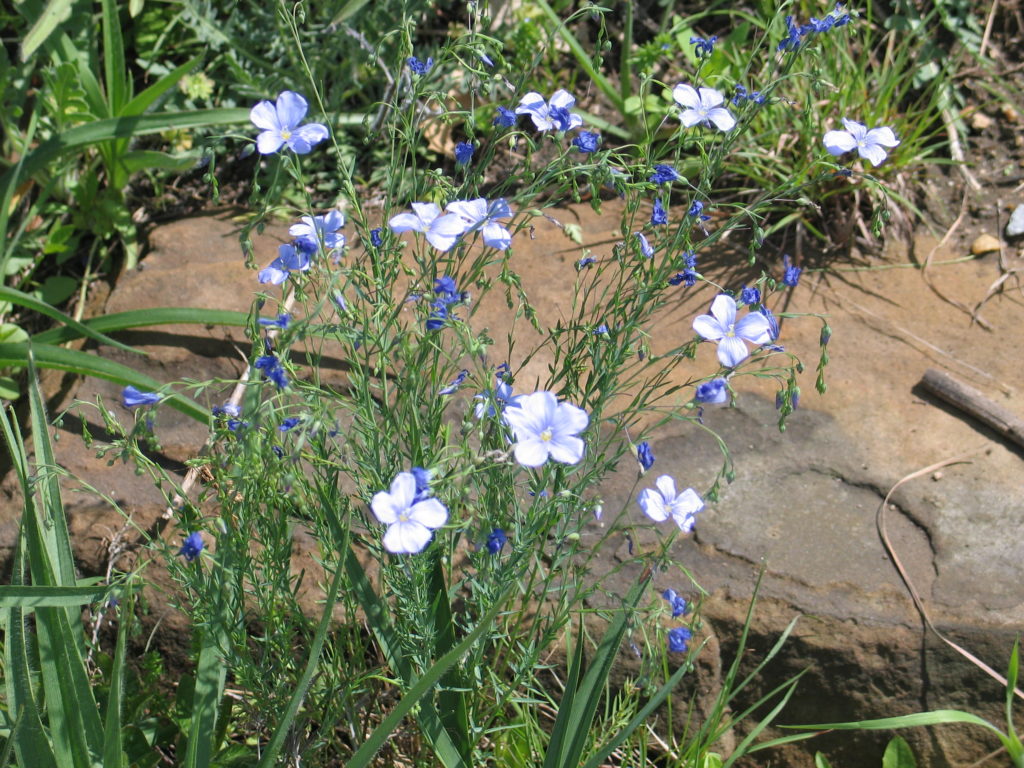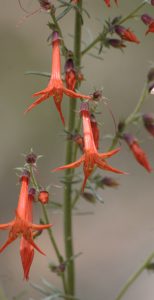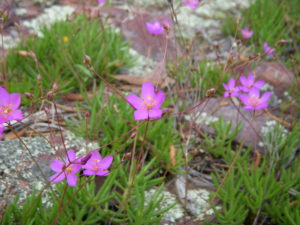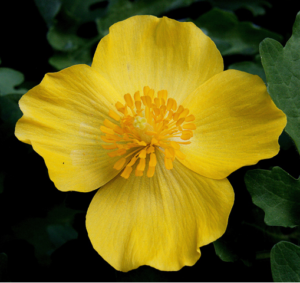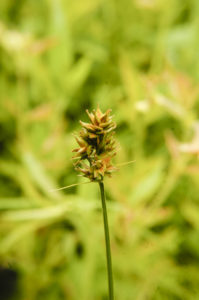Today is the 50th Anniversary of Earth Day. For a half century, April 22 has been a day when we celebrate a connection with our planet and pause to think about how we can be better earth stewards. I would like to state the case for having native plants be central to this stewardship focus.
Earth Day in 1970 mobilized 20 million Americans to unify in support of environmental protection. The energy of this movement led to a greater awareness of and protection for natural elements important to humans, including clean air (Clean Air Act of 1970), clean water (Clean Water Act of 1972) and biological diversity (Endangered Species Act of 1973).
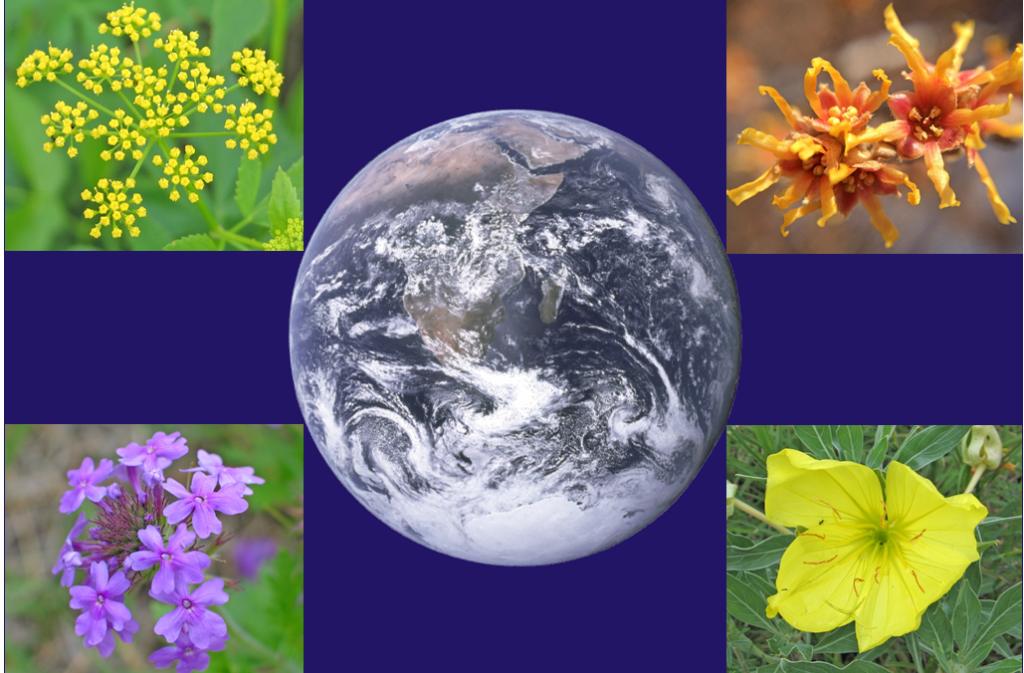
Native plants and their ecosystems are closely connected to the health of air, water, and biological diversity. Native plants photosynthesize, produce oxygen and sink atmospheric carbon. Native plants buffer streams, hold soil, and filter moving water. Native plants provide food and habitat for wildlife of all kinds. For the more than one billion people that will recognize Earth Day around the world today, celebrating native plants could easily be central to this celebration.
So, to celebrate the 50th Earth Day, I would like to recognize some of the spring-blooming native plants that are hitting their stride in my home landscape right now.

Spring blooming wildflowers offer the first signs of hope after a long winter. In late winter/early spring, they bait us with anticipation, even when nighttime temperatures regularly dip below freezing and cold winds are not yet inviting us to be outside. Their root systems receive messages from increasing hours of daylight and higher average temperatures. Their green shoots break dormancy and emerge as if they are responding to cheerful invitations of the robins, repeatedly calling “cheer-up, cheer-a-lee, cheer-ee-o”.
That was the scene in my yard in early March. Fast forward now to mid April through more than a month of pandemic isolation. While I’m captive at home, the need for hope and beauty seems ever greater and the following spring blooming wildflowers are answering the call.
Wild Ginger (Asarum canadense)

Wild ginger is a creeping wildflower that creates growing ground cover colonies. The roots of the plant smell like ginger. Their heart-shaped close-to-the-ground leaves may be less than striking, but the hidden flowers of wild ginger (pollinated by beetles, flies and ants) are worth the search.
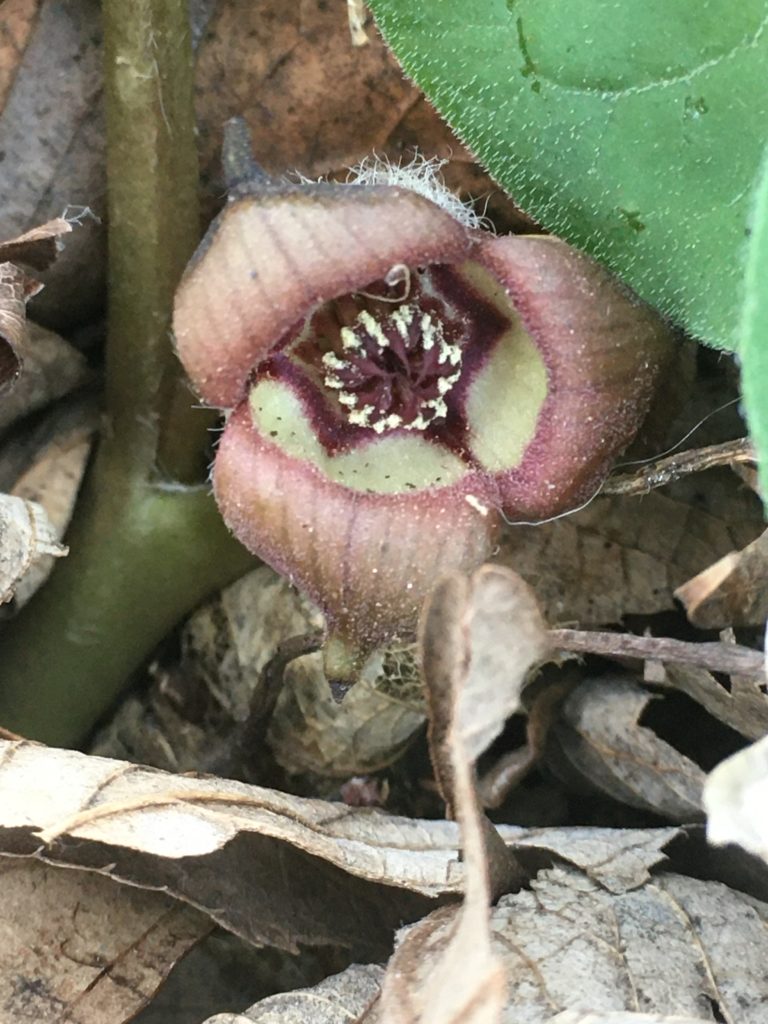
Woodland Phlox (Phlox divaricata)
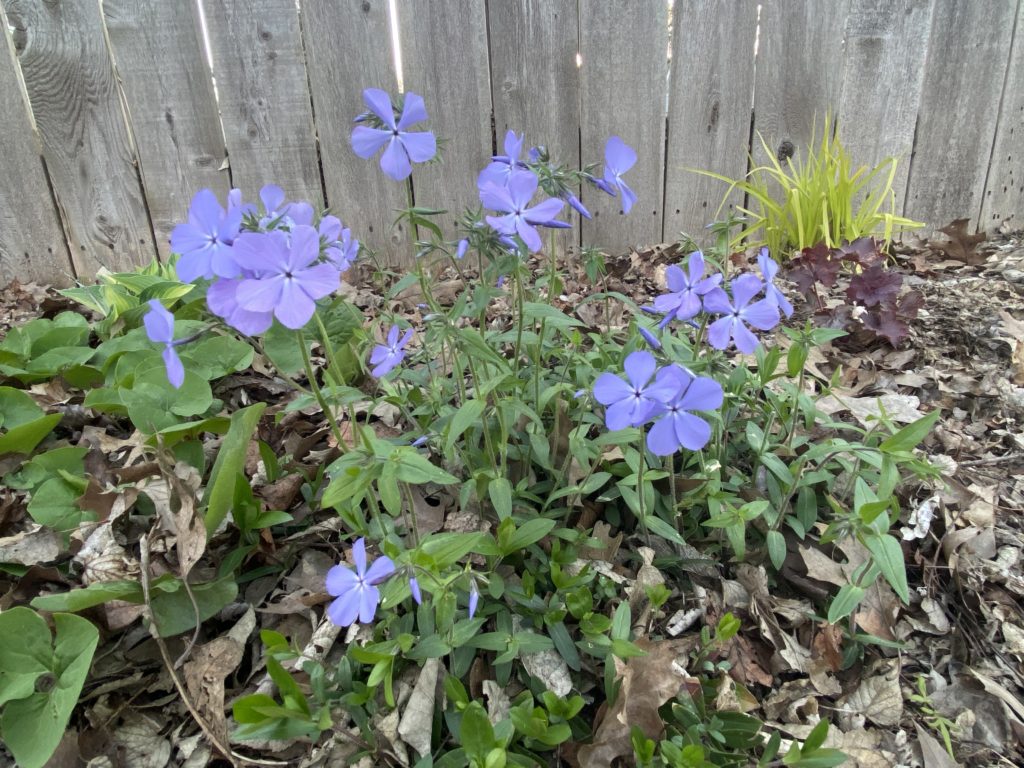
The Greek meaning of the word phlox refers to the intense floral color which is evident once you see woodland phlox in bloom. The plant will form a spreading colony. It does surprisingly well in Kansas if you can find a protected place for it. The fragrant and showy flowers attract butterflies, hummingbird moths, and hummingbirds.
Roundleaf Ragwort (Packera obovata)
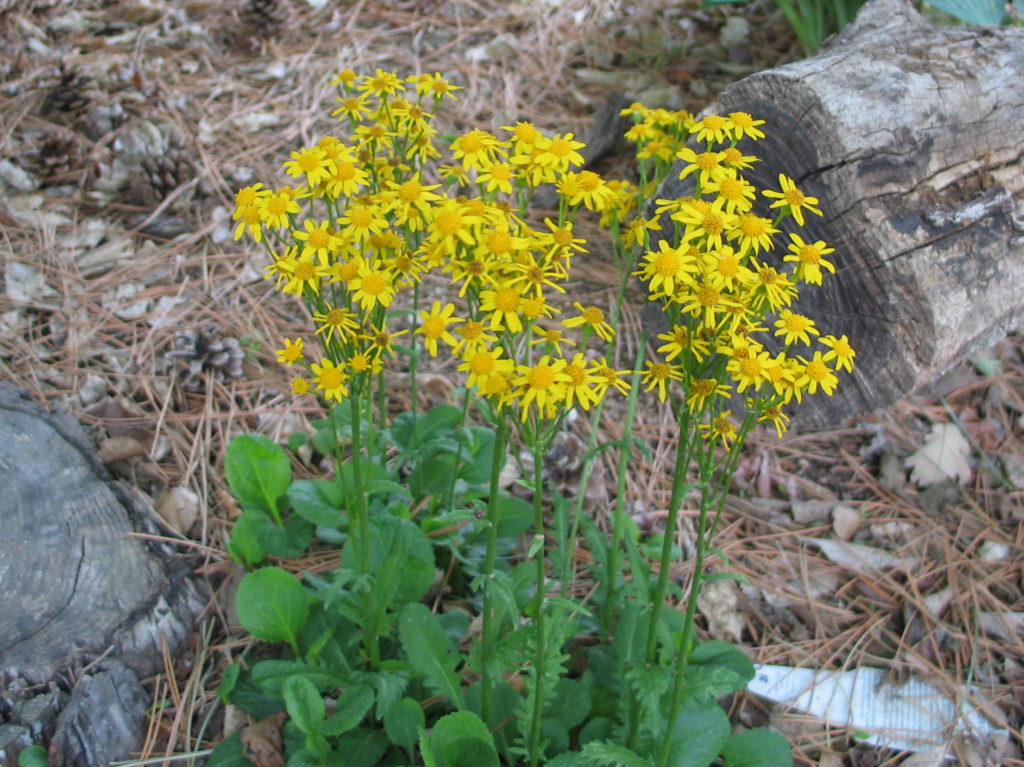
Once established, roundleaf ragwort establishes a creeping colony and is one of the earliest bloomers in the spring. Roundleaf ragwort flowers attract butterflies, bees, and bumblebees. With an evergreen leaf throughout all seasons, this species offers year-round interest without being invasive to the detriment of surrounding plants.
Pennsylvania sedge (Carex pennsylvanica)
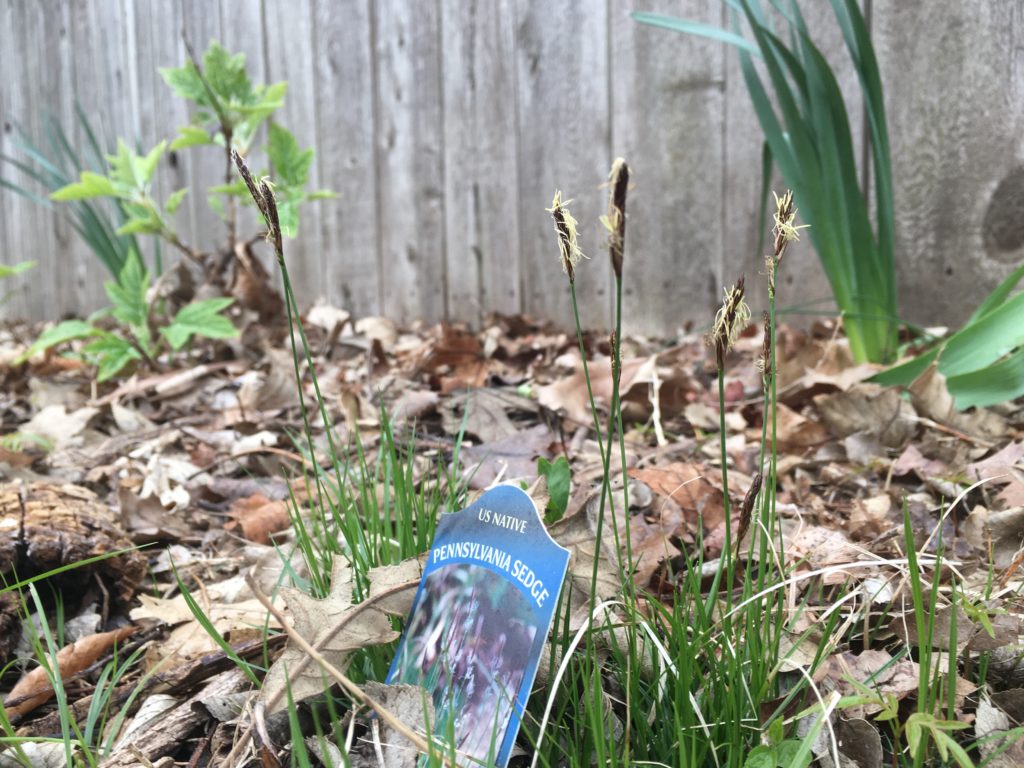
Pennsylvania sedge is commonly found in the dry to dry-mesic understory of oak-hickory woodlands. It is a nice landscaping choice for a dry, shady yard location in Kansas. While they certainly do resemble grasses in their appearance, sedges, characterized by their triangular stem (“sedges have edges”) are in a family all their own.
Columbine ‘Pink Lanterns’ (Aquilegia canadensis)

Columbine is easy to establish in partial sun to full shade conditions and its flowers attract hummingbirds and bumblebees. The name is in reference to a couple of birds. The genus name Aquilegia is derived from a combination of the Latin word “aquila” (meaning eagle for the five spurs resembling an eagle claw) and the Latin word for “columba” (meaning dove, for five doves nestled together). This pink version of Aquilegia canadensis was actually discovered in Marion County, Kansas by Dyck Arboretum of the Plains!
Spring Bloomers in Your Landscape
Many spring blooming wildflowers are native to woodland understories. Such woodland understories historically would have only been native to Eastern Kansas. Today, urban tree canopies and the north side of fences, garages, and houses all provide great shady habitat to plant spring woodland bloomers like those featured in our FloraKansas plant sale Spring Woodland Kit.

But you certainly don’t need to stop with the species in this kit. See a previous blog post (Spring-Blooming Prairie and Woodland Plants) featuring additional spring bloomers that you might consider for shady or sunny areas.
Celebrate Earth Day with me. Consider participating in the rewarding ritual of native plant gardening and make every day Earth Day.

